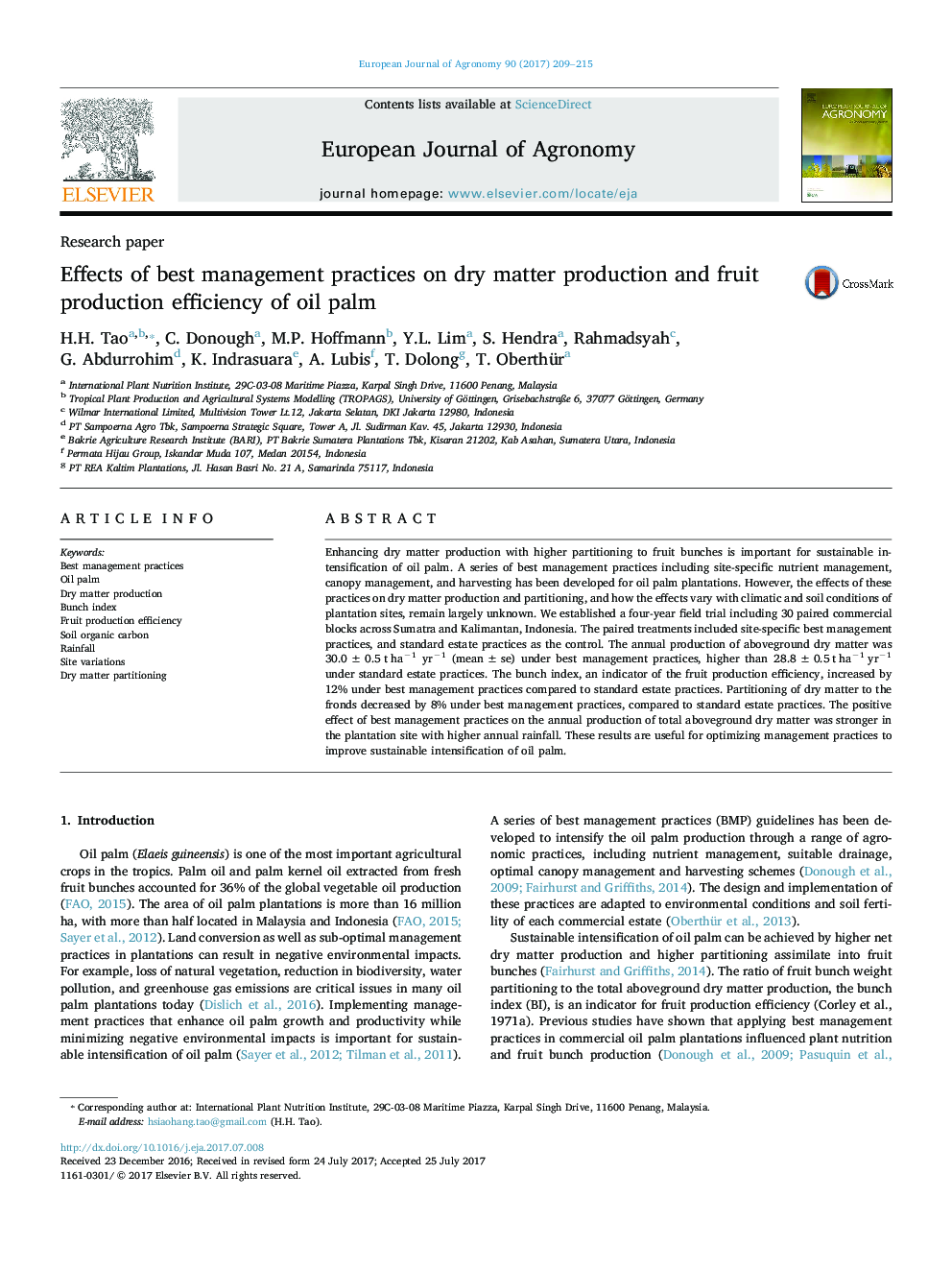| Article ID | Journal | Published Year | Pages | File Type |
|---|---|---|---|---|
| 5761196 | European Journal of Agronomy | 2017 | 7 Pages |
Abstract
Enhancing dry matter production with higher partitioning to fruit bunches is important for sustainable intensification of oil palm. A series of best management practices including site-specific nutrient management, canopy management, and harvesting has been developed for oil palm plantations. However, the effects of these practices on dry matter production and partitioning, and how the effects vary with climatic and soil conditions of plantation sites, remain largely unknown. We established a four-year field trial including 30 paired commercial blocks across Sumatra and Kalimantan, Indonesia. The paired treatments included site-specific best management practices, and standard estate practices as the control. The annual production of aboveground dry matter was 30.0 ± 0.5 t haâ1 yrâ1 (mean ± se) under best management practices, higher than 28.8 ± 0.5 t haâ1 yrâ1 under standard estate practices. The bunch index, an indicator of the fruit production efficiency, increased by 12% under best management practices compared to standard estate practices. Partitioning of dry matter to the fronds decreased by 8% under best management practices, compared to standard estate practices. The positive effect of best management practices on the annual production of total aboveground dry matter was stronger in the plantation site with higher annual rainfall. These results are useful for optimizing management practices to improve sustainable intensification of oil palm.
Keywords
Related Topics
Life Sciences
Agricultural and Biological Sciences
Agronomy and Crop Science
Authors
H.H. Tao, C. Donough, M.P. Hoffmann, Y.L. Lim, S. Hendra, Rahmadsyah Rahmadsyah, G. Abdurrohim, K. Indrasuara, A. Lubis, T. Dolong, T. Oberthür,
